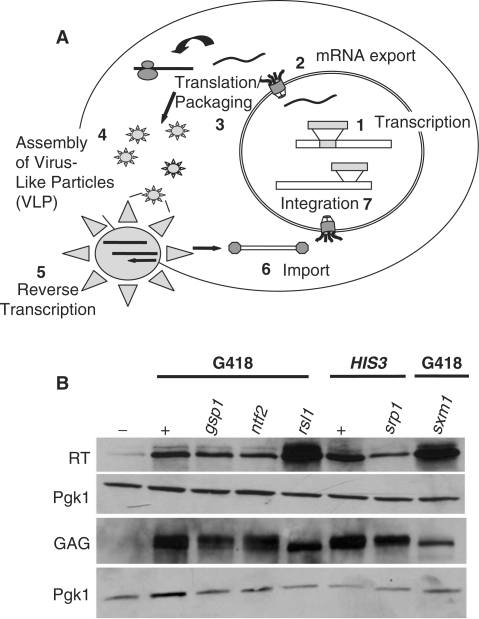Figure 2.
Analysis of Ty1 proteins in nuclear transport mutants defective for transposition. (A) A schematic of the Ty1 lifecycle: (1) Ty1 mRNA is transcribed; (2) the mRNA is processed and exported to the cytoplasm; (3) Ty1 proteins are translated and processed; (4) virus-like particles (VLPs) then form; (5) the mRNA is reverse transcribed into cDNA; (6) Ty1 IN and Ty1 cDNA are imported into the nucleus; and finally, (7) IN functions to integrate the Ty1 genome into the cellular genome. (B) Ty1 proteins are translated and properly processed in nuclear transport mutants that show transposition defects. gsp1-1, ntf2-1, srp1-55, rsl1 L63A and Δsxm1 cells were transformed with test plasmid and induced in media containing galactose to undergo retrotransposition. As a control, wildtype cells were also transformed with the test plasmid (+) and a URA (pRS316) vector (−) and induced for retrotransposition. As a further control, Δsxm1 cells, which show no retrotransposition defect, were also transformed with the test plasmid and induced for retrotransposition. Immunoblot analysis of Ty1 reverse transcriptase (RT) and Gag proteins was performed using antibodies against each Ty1 protein (see ‘Materials and Methods’ section). As a loading control, an antibody directed against Pgk1 (3-PhosphoGlycerate Kinase 1) was used (Molecular Probes).

